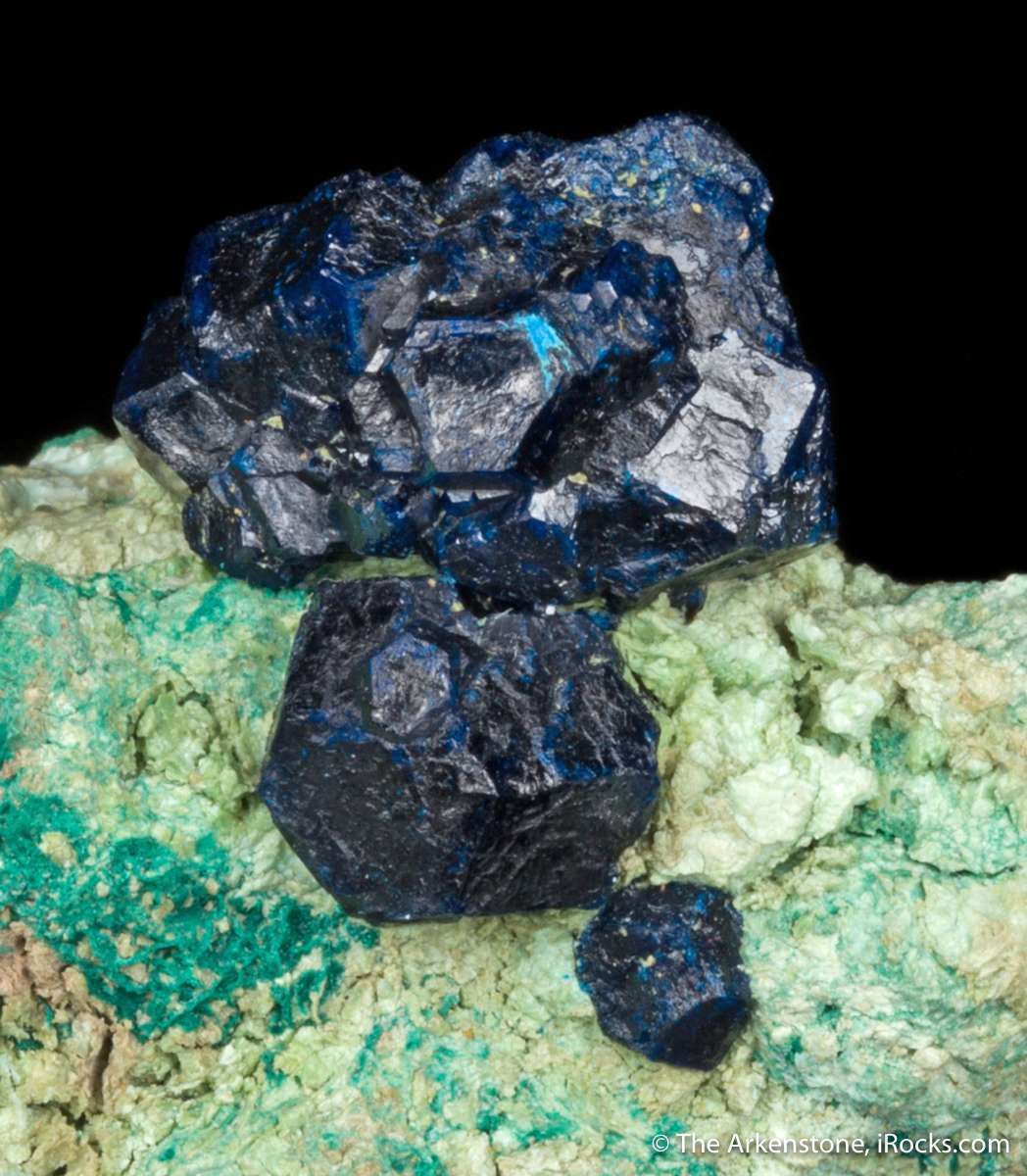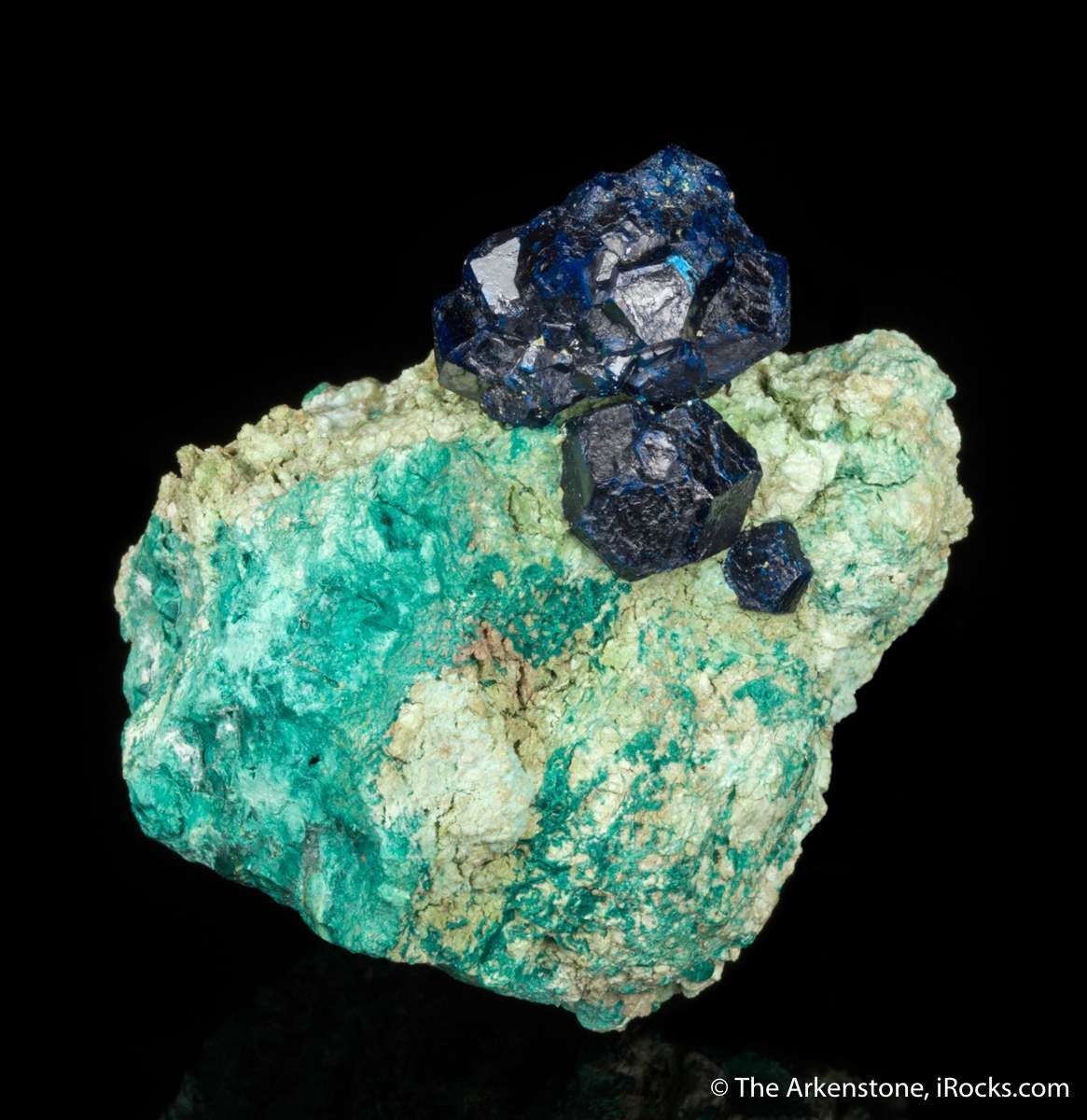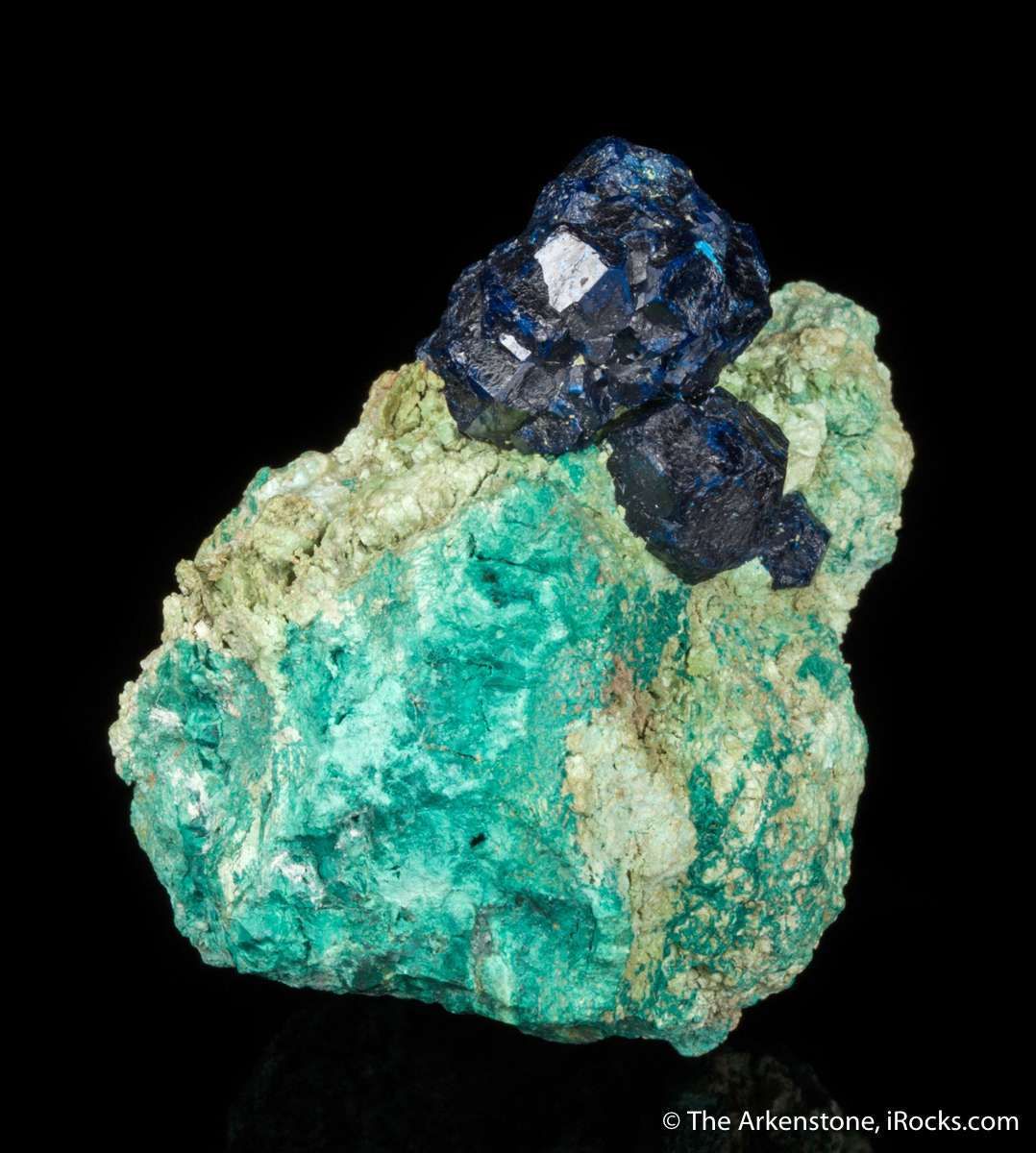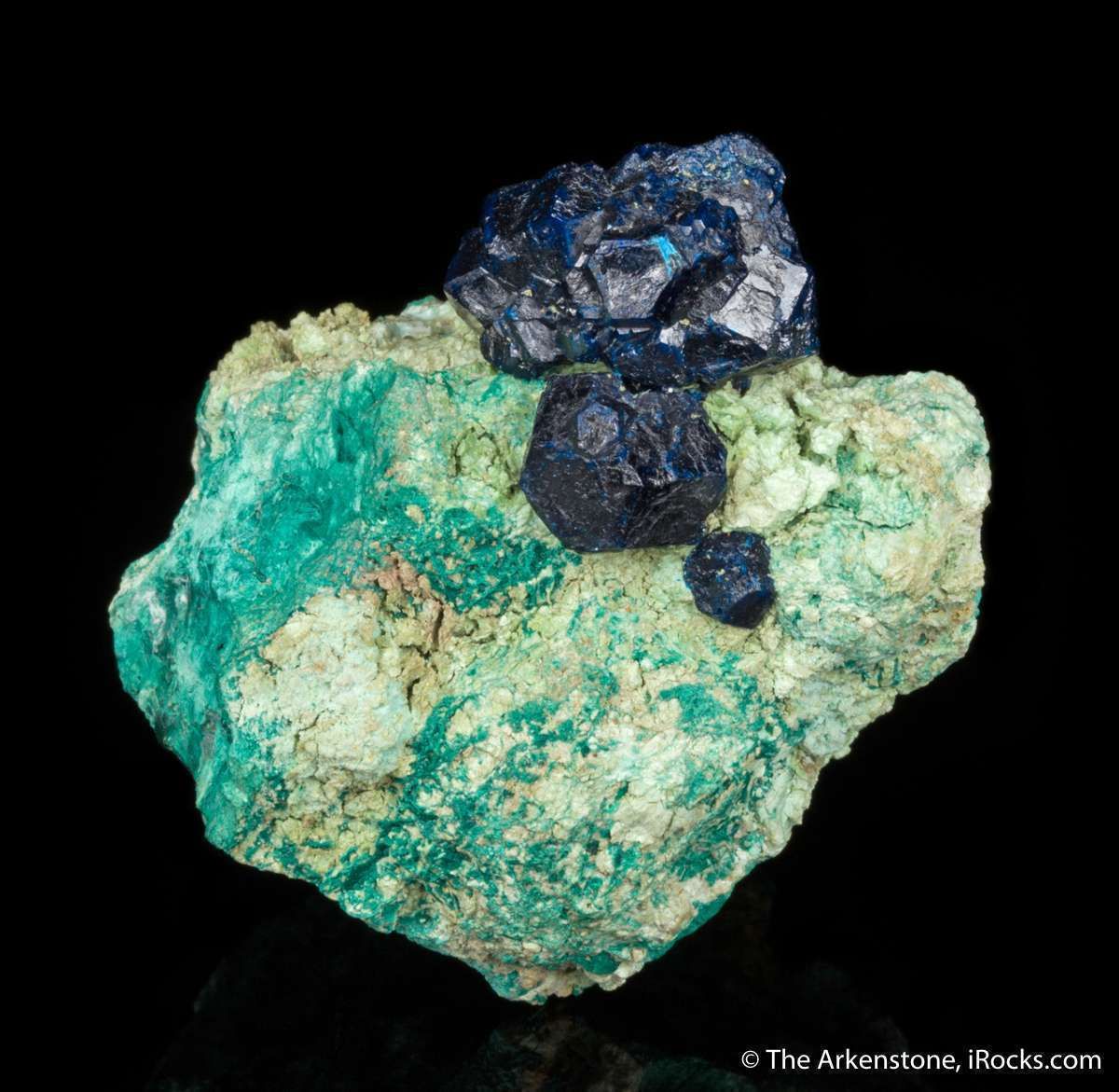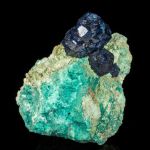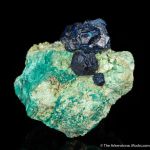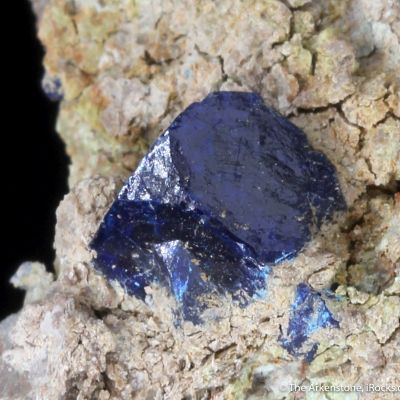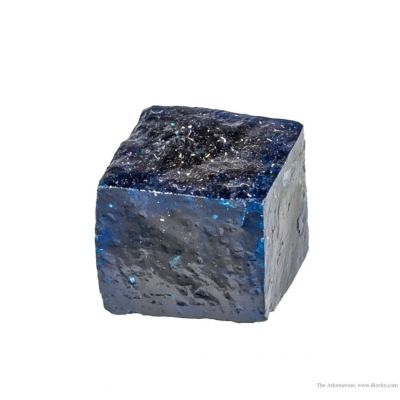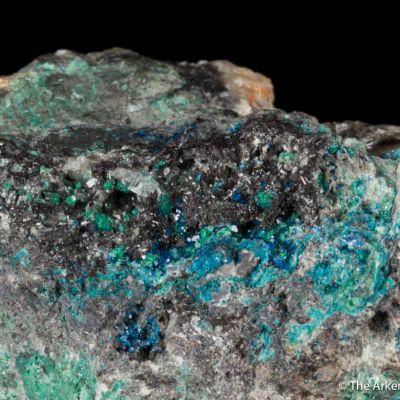- MIX17B-08
- Boleite (unusual modified crystals)
- Amelia Mine, Baja California, Mexico
- Miniature, 4.6 x 3.6 x 3.3 cm
- Ex. Dr. HJ Wilke
- SOLD
Who would believe that this opaque blue mineral is a silver species?! Boleite is, however, one of the most beautiful of the rare silver species and has a long history. This large miniature shows off a fine cluster of lustrous, faintly translucent, indigo-blue boleite crystals, to 2 cm across, aesthetically emplaced on a matrix of green secondary copper ore. After viewing many photos of boleite on matrix on MINDAT or in the media, you will see that it is apparent that this combination of size and richness on one specimen is rare for the deposit. Boleite is a very rare silver species that only here forms large crystals in this quality. After its first discovery in the late 1800s, it was a classic for Mexico, but a little off the beaten track as far as geography goes, compared to the rest of the Mexican minerals we see on the market. This is one of the finest boleite specimens in its size class (so far as I know from extensive viewing of collections that are relevant, and to my taste in aesthetics) collected in the "rediscovery" of the old location for this species, by field-collectors Bill Larson and Ed Swoboda in 1973. Certainly today, over 35 years later, they are even more hard to obtain and are considered one of the hardest to obtain in a high quality as opposed to a reference quality, of the Mexican classics. As well, these remain world's best of species. Lastly, this particular crystal habit, highly modified, is 100 times more rare than the traditional cubic habit. Take all this together, and this is a highly significant miniature of competitive quality. It was for many years (at least 40) in the collection of Dr. HJ Wilke, a noted German collector and dealer at Tucson in the old days, who got it directly from Swoboda and Larson at the time. NOTE: All matrix specimens were found in crumbly moist kaolinite matrix and soaked in glue at the time, as a preservative and to stabilize. This specimen has been restabilized with a modern epoxy to ensure it does not dry out and crumble.
